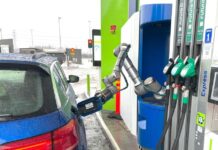In the US, trucking dominates inland freight transportation. It moves billions of tons annually and is expected to increase over the next several years. With the rise of AI-powered autonomous vehicles, there has also been a significant push to make tractor-trailers self-driving as well. In this article, we will take a look at some of the latest developments in autonomous trucking and the data annotation needed to train these systems.
New Driving Corridors are Opening Up
More and more companies are trying to achieve all of the benefits autonomous driving has to offer, which is why new corridors for autonomous trucks are popping up. A great example of the most recent one comes from Volvo. The company recently opened an office in Fort Worth, Texas, as part of a big expansion in North America. The new office is responsible for establishing the first autonomous freight corridors for the business, which will run from Dallas Fort Worth to El Paso and from Dallas to Houston. The company’s activities in the area are anticipated to be considerably improved by this shift.
Volvo has already begun to transport cargo with trucks utilizing drivers for important clients like DHL and Uber Freight in order to evaluate various parts of the transport solution and build frameworks and procedures for secure and dependable operations. By gaining full ownership of the components needed for autonomous commercial transportation, the firm seeks to lower the friction and difficulties associated with ownership and operations for its clients and serve as its single point of contact.
The Emergence of ADAS For Autonomous Trucking
Recent data from the Insurance Institute for Highway Safety (IIHS) shows that ADAS technology, like forward collision mitigation, can reduce front-end commercial vehicle accidents by up to 44%. Such a potential increase in safety is one of the main factors driving the adoption of ADAS for trucking. This includes things like lane keep assist, road disturbance suppression, and active return, as well as sensors that have to act in concert with the electronic control unit (ECU) controlling the system. The camera sensor alerts the system ECU when the car starts to veer off course, and the ECU adjusts the steering to gently bring it back. The complete system functions as a unit to give the drive a highly beneficial feature.
Hardware advancements in the next generation of systems should enable companies to create technology that can recognize vehicles and other things of interest more quickly and from greater distances. This will enable them to improve the present collision mitigation features and release additional features. Future technology will have sensors that can sense the surroundings and have a longer range. These can be combined with ever-more potent electronic control processing units. Higher levels of system redundancy will be possible thanks to higher processing power, ensuring that they function under all circumstances, whether piloted or automated modes. These help pave the way for the subsequent generation of mobility when coupled with electronically controlled chassis systems.
What Types of Data Annotation are Needed to Train Autonomous Trucks?
One of the main technologies used to make autonomous trucking a reality is LiDAR, which is a remote sensing method that uses light in the form of a pulsed laser to measure ranges. These light pulses—combined with other data recorded by the airborne system — generate precise, three-dimensional information about the physical world that surrounds the truck. This creates a 3D Point Cloud is the set of points generated by sensors like LiDAR that define the 3D structure of an object in space. These 3D Point Clouds need to be annotated with methods like 3D bounding, which identifies vehicles, vulnerable road users, traffic signs, traffic lights, etc. More advanced types of annotation, like polylines, help the system identify curbs, road pavement, and lane markers.
In addition to this, computer vision cameras are also used to put autonomous trucks on the road. These are trained through various image and video annotation methods. Image classification is a type of image annotation that looks for the presence of comparable objects shown in pictures over a whole dataset. It is used to teach a computer to identify an object in an unlabeled image that resembles an object in other labeled photos that you fed it during training. In addition to this, Semantic segmentation is often used, which draws lines separating related things and assigns the same identity to them. When you wish to comprehend the existence, position, and, occasionally, the size and shape of items, you employ this strategy.


































